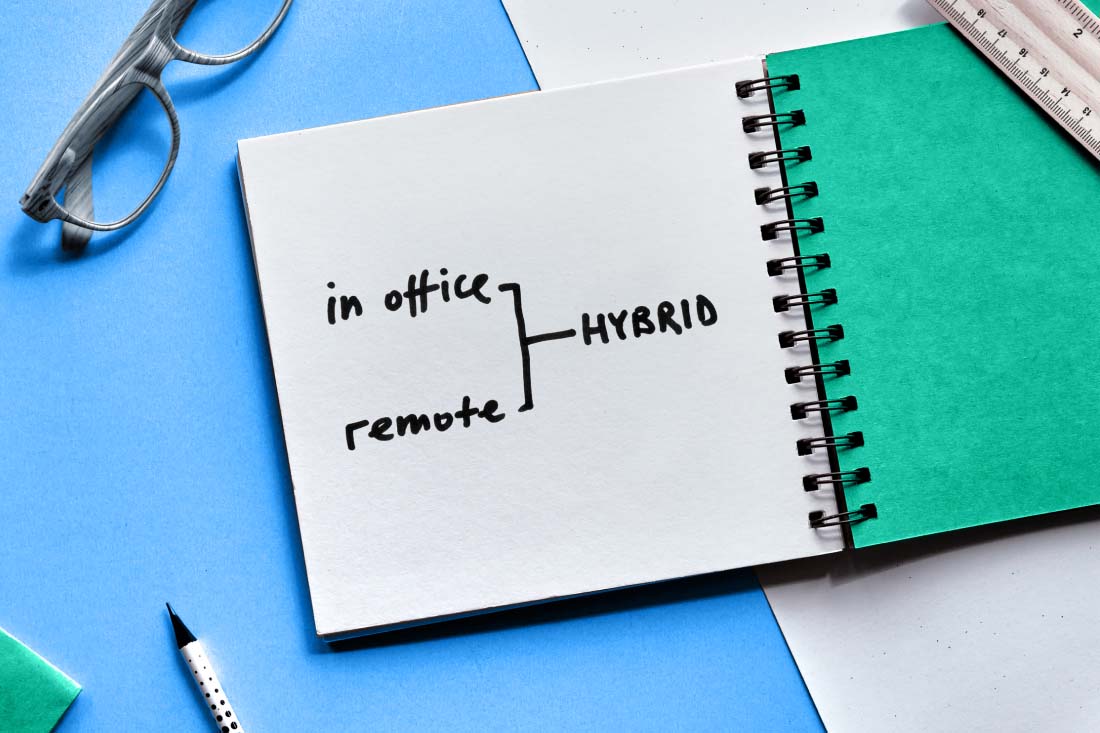Hybrid work is no longer a trend — it’s the new standard for how businesses operate today. According to Gallup, 51% of U.S. workplaces use hybrid models. And 60% of employees either want or expect these arrangements in the future.
For managers, this new reality presents unique challenges and opportunities as leaders balance employee desires for flexibility with organizational needs for performance, accountability and engagement.
Get practical strategies and guidance in this hybrid workforce playbook for managers.
Rethinking productivity in the hybrid era
In a hybrid arrangement, traditional productivity metrics aren’t enough. Why? Because outcomes matter more than presence. But without the physical cues of in-office work, many managers struggle to understand how remote work gets done, where blockers exist and who may be falling behind or burning out. If this sounds familiar, it’s time to shift your strategies to adapt to the hybrid landscape. This means analyzing how employees balance focus time with collaboration, how workflows differ between remote and in-office days and how consistently efforts align with business outcomes.
Best way to do this? Leverage a workforce analytics platform like ActivTrak. This software gives managers visibility into data and trends that aren’t obvious on the surface and can’t be measured by counting attendance or hours worked. It allows you to uncover friction, celebrate effective habits and intervene early when employees need support.
Hybrid work playbook for managers
Every workplace is unique, and different teams benefit from different hybrid workforce models. The following playbook includes tips to help any manager guide a hybrid team effectively.
Foster inclusion and belonging
One of the biggest challenges in hybrid work is ensuring all team members feel equally valued and included — and have the same opportunities for advancement, regardless of physical location. To prevent this problem, prioritize creating an inclusive, digital-first culture where remote employees aren’t on the sidelines during meetings or decision-making processes.
Practical steps:
- Rotate meeting times to accommodate different time zones.
- Use video conferencing to maintain face-to-face interaction.
- Encourage informal virtual gatherings to build rapport.
- Implement regular check-ins for team members to share concerns.
- Celebrate team milestones and individual achievements publicly.
Choose the right communication channels
Hybrid work demands a thoughtful, intentional approach to communication to ensure hybrid team collaboration stays seamless and effective. Leverage a mix of synchronous and asynchronous channels to accommodate different work styles and time zones, while remaining mindful of overcommunicating or turning communication channels into a distraction.
Practical steps:
- Use video calls for brainstorming and sensitive conversations.
- Leverage email or project management platforms for updates and documentation.
- Approach communication from a digital-first perspective to ensure remote workers are included.
- Create policies on meeting times, structure and frequency to ensure they’re productive and inclusive.
- Design virtual spaces where employees connect respectfully on a personal level through chat or sharing platforms to encourage camaraderie.
Establish clear expectations without micromanaging
Hybrid work thrives on clarity, especially when it comes to expectations around presence and performance. Employees need to know when you expect them to be available, how responsive they should be and when you need them in the office. In addition, follow these guidelines yourself to avoid overstepping boundaries and micromanaging employees by checking in too often.
Practical steps:
- Set clear, written expectations around who works when and where.
- Define and model availability and working hours, such as enforcing “quiet hours” or empowering employees and managers alike to respond only when they’re on the clock.
- Create organization-wide collaboration hours across time zones and limit unnecessary meetings or distracting communication.
- Get input from the team and revisit policies regularly to accurately reflect current needs and gain buy-in.
Set clear goals and metrics
Beyond office hour expectations, employees need to know what success looks like for their work. Focus on outcome-based goals that emphasize achieving business objectives over measuring how many hours employees work.
Practical steps:
- Develop performance criteria rooted in clear, measurable metrics like deliverables and KPIs.
- Use frameworks like OKRs (objectives and key results) to provide structure and clarity.
- Establish regular check-ins to review progress and adjust goals to ensure alignment.
Support autonomy with guardrails
One of the best benefits of hybrid work is autonomy. Employees gain flexibility over how they structure their days, leading to improved focus and employee experience. But autonomy without accountability often backfires, especially if employees lack clarity on what “good performance” looks like in a distributed setting.
Practical steps:
- Define what balance looks like, including healthy breaks and sustainable workloads.
- Share performance benchmarks that align with team goals.
- Check in regularly on results as well as effort and well-being.
- Leverage data to help employees see what habits impact their performance, such as multitasking or priority alignment.
Coach with context, not just corrections
Hybrid teams need coaching that’s personalized, consistent and grounded in context. Without the benefit of hallway conversations or spontaneous observations, it’s easy for managers to rely on assumptions or only give feedback when something goes wrong.
Practical steps:
- Ground coaching in workforce analytics data to understand peak focus or collaboration and what may cause distractions.
- Identify misalignments between activity and outcomes to offer support rather than judgment.
- Celebrate progress and effort, even if the results are still in development.
- Empower employees to provide feedback on business leaders, managers or the organization to create balanced coaching across the company and build trust.
Manage workload and capacity in real time
Hybrid work environments sometimes obscure capacity issues, as some employees may be quietly overwhelmed while others are underutilized. Without visibility, managers risk making inaccurate assumptions or distributing work inequitably.
Practical steps:
- Examine employee patterns such as focus time, time in meetings or app usage to assess team health and manage capacity effectively without relying on self-reporting.
- Study trends over time to allocate resources and plan for workforce capacity during predicted upswings to prevent burnout.
Support employee well-being and work-life balance
Hybrid and remote work often blur the boundaries between professional and personal life, leading to burnout. Managers must actively promote well-being to keep employees productive and healthy.
Practical steps:
- Encourage regular breaks and respect off-hours, and model these behaviors as a leader yourself.
- Offer mental health and wellness benefits and create opportunities for social connection
- Train leaders on how to encourage well-being and recognize warning signs of burnout.
Leverage technology and understand how employees use it
Most hybrid work models run on digital tools, but managers must ensure teams know how to use them. Provide training on reliable collaboration platforms, cloud-based document sharing apps and secure communication tools to prevent tech overload.
Practical steps:
- Analyze tool usage to see which applications employees use and how they’re using them.
- Consolidate apps and create clear policies on usage to reduce silos.
- Manage SaaS spend by monitoring unused licenses or programs and phasing them out.
- Train employees and managers to use your technology to its full potential.
- Engage employees and teams in feedback to find the right tech for everyone and increase buy-in across departments.
Create a culture of continuous learning and improvement
Success in hybrid work environments is more than a one-time implementation. As teams evolve and expectations shift, managers and leaders need to build a culture of continuous improvement to keep up.
Practical steps:
- Survey team members regularly about workload, collaboration and culture — then keep them in the loop about changes and the reasoning behind them.
- Use employee productivity data to test assumptions and challenge the status quo.
- Reflect quarterly on what’s working, what’s not and where to improve.
Lead hybrid teams more effectively with ActivTrak
Managing hybrid teams requires a deliberate yet flexible approach that balances structure with empathy. As organizations continue to adapt, those who master hybrid leadership will drive higher engagement, innovation and business success.
Take control of your hybrid workforce with analytics and insights from ActivTrak’s hybrid workforce management software. Make confident, data-informed decisions with a deeper understanding of remote productivity and well-being. And find out what helps employees work best — no matter where they’re located.
Request a demo today to see how ActivTrak empowers you to lead your hybrid workforce today and into the future.





